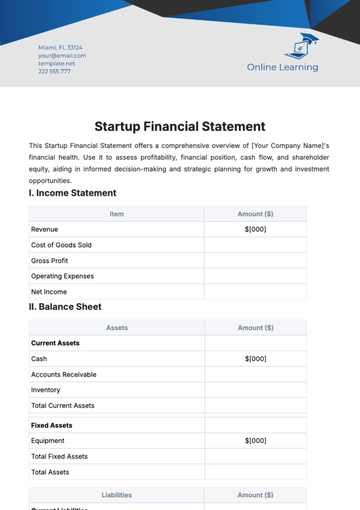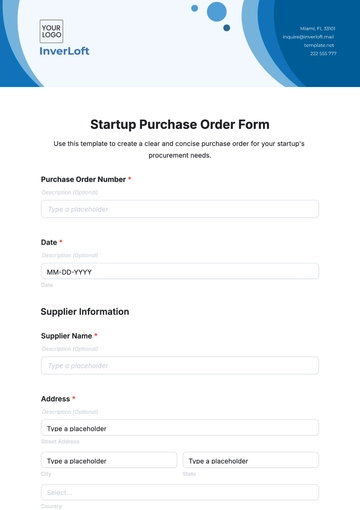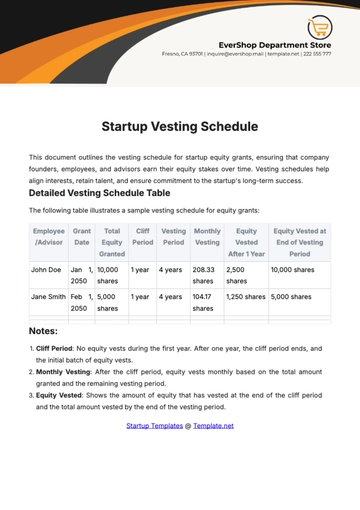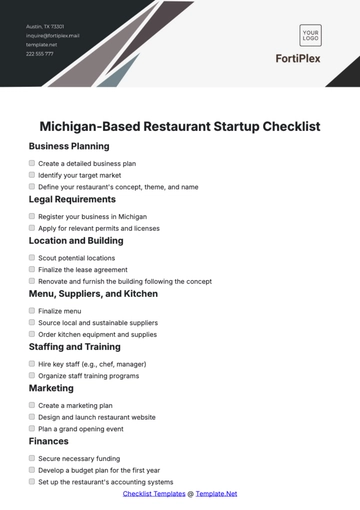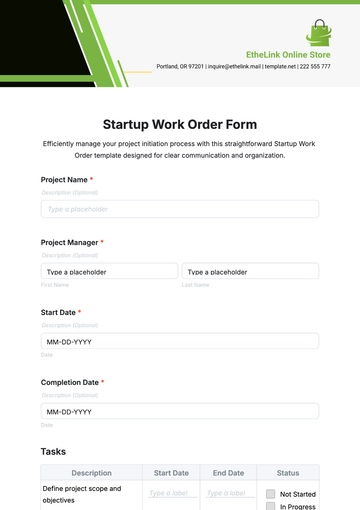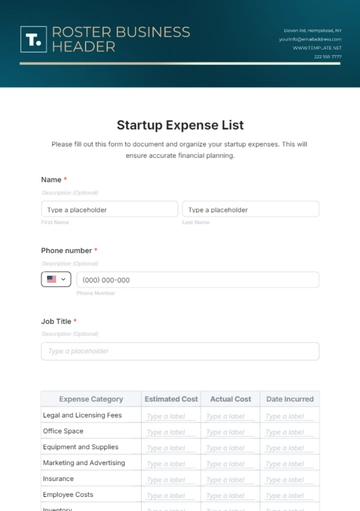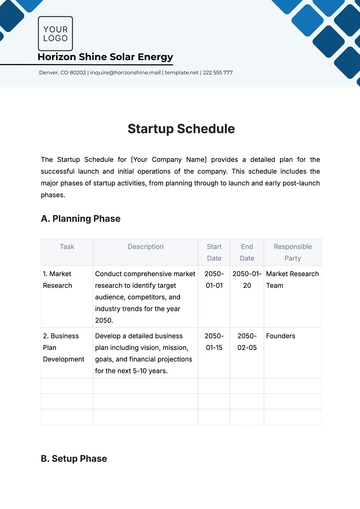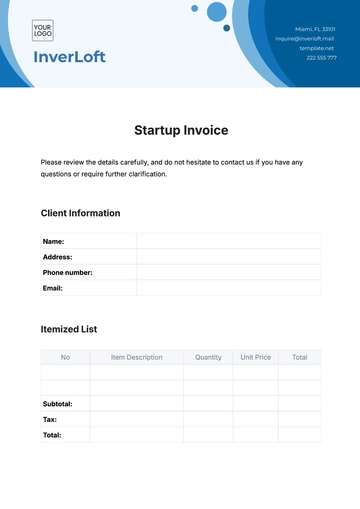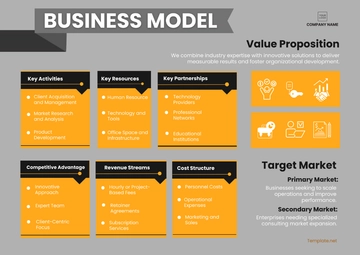Free Startup Financial Strategy Guide

I. Importance of Financial Strategy
For startups, a well-crafted financial strategy is not just a roadmap for managing money; it's a critical component of overall business strategy that can determine success or failure. In the early stages of growth, startups face unique financial challenges, including securing funding, managing cash flow, and achieving profitability. A robust financial strategy equips startups to navigate these challenges effectively, ensuring that they can make informed decisions, optimize resources, and sustain growth over the long term. By prioritizing financial planning, startups can mitigate risks, capitalize on opportunities, and build a strong foundation for future success.
II. Objectives of the Guide
This guide aims to provide startup founders and financial managers with comprehensive insights and practical tools to develop and implement a successful financial strategy. Specifically, the guide will:
Demystify key financial concepts and terms.
Outline the process for setting actionable financial goals.
Explore various funding options and strategies for securing investment.
Offer guidance on budgeting, expense management, and improving cash flow.
Discuss revenue models, monetization strategies, and pricing.
Highlight the importance of regular financial analysis and performance metrics.
Provide an overview of tax planning, compliance, and risk management.
Recommend financial software and tools for efficient management.
Advise on when and how to build a financial team.
By following the strategies and best practices outlined in this guide, startups can enhance their financial health, support strategic business objectives, and position themselves for long-term growth and success.
III. Key Financial Terms and Concepts
Understanding financial terminology is crucial for startup founders and managers. Here are some key terms and concepts:
Capital: The funds used to start and grow the business.
Equity: Ownership interest in the company, often exchanged for capital investment.
Liabilities: Financial obligations or debts owed by the company.
Liquidity: The ability of the company to meet its short-term financial obligations.
Burn Rate: The rate at which a company consumes its capital to cover overhead before generating positive cash flow.
Runway: The amount of time the company can continue operating at its current burn rate before needing additional funds.
IV. Financial Statements
Financial statements are vital tools for managing a startup's finances, providing insights into its financial health and informing decision-making.
Balance Sheet: This statement provides a snapshot of a company's financial position at a specific point in time, detailing assets, liabilities, and equity. It's crucial for understanding the company's net worth and financial stability.
Income Statement (Profit and Loss Statement): This statement summarizes the company's revenues and expenses over a period, showing how the business has performed financially. It's essential for assessing profitability and guiding strategic planning.
Cash Flow Statement: This statement tracks the flow of cash in and out of the business, highlighting how well the company manages its cash position. It's vital for ensuring that the business has enough cash to cover its obligations and support its operations.
Each of these statements serves a specific purpose and is best used in different scenarios. The balance sheet is key for financial analysis at any given moment, the income statement is best for understanding operational performance over time, and the cash flow statement is crucial for managing day-to-day financial health and planning for the future.
V. Short-term vs. Long-term Financial Goals
For startups, setting both short-term and long-term financial goals is crucial for guiding strategic decisions and ensuring financial health. Short-term financial goals typically span a period of up to one year and focus on establishing a solid financial foundation. These goals include managing cash flow, covering initial operating expenses, and achieving specific revenue targets. Long-term financial goals extend beyond one year and are aimed at achieving sustainable growth, profitability, and market share expansion. These goals might involve scaling operations, entering new markets, or launching new products or services.
A. Short-term Financial Goals
Short-term financial goals are essential for navigating the startup phase, where immediate financial stability is critical. These goals might include securing initial funding, achieving a positive cash flow within the first year, or reaching a specific number of customers. Short-term goals provide a clear focus for daily operations, helping startups to prioritize resources and activities that drive immediate financial health and stability.
B. Long-term Financial Goals
Long-term financial goals set the vision for the startup's future and involve strategic planning for growth and expansion. These goals could encompass becoming a market leader, achieving a set annual revenue growth rate, or preparing for an IPO or acquisition. Long-term goals require a strategic approach to financial planning, investment in innovation, and continuous adaptation to market trends and opportunities.
VI. Funding Options
Securing the right funding is critical for the growth and sustainability of a startup. There are several funding options available, each with its own advantages and considerations.
A. Bootstrapping
Bootstrapping involves funding the startup through personal savings, revenue, and minimal external financing. This approach allows founders to maintain full control over the business but may limit growth potential due to financial constraints.
B. Angel Investors
Angel investors are high-net-worth individuals who provide capital in exchange for equity or convertible debt. Angel investing can offer valuable mentorship and network opportunities, alongside the necessary funds.
C. Venture Capital
Venture capital firms invest in startups with high growth potential in exchange for equity. VC funding can provide significant capital and business expertise but often requires giving up a portion of control and ownership.
D. Crowdfunding
Crowdfunding allows startups to raise small amounts of money from a large number of people, typically via online platforms. This method can validate the product concept and build a community of supporters but may not raise as much capital as other options.
E. Loans
Loans from banks or financial institutions provide startups with capital that must be repaid over time with interest. This option can be challenging for early-stage startups without a financial track record but can be a viable option for those with steady revenue streams.
VII. Pros and Cons of Each Funding Option
Choosing the right funding option depends on the startup's stage, industry, financial needs, and growth ambitions. It's crucial to carefully consider the pros and cons of each option to determine the best fit for the startup's objectives and financial strategy.
Funding Option | Pros | Cons |
Bootstrapping | Full control retained; No equity lost | Limited funds; Can hinder rapid growth |
Angel Investors | Access to mentorship; Flexible agreements | Equity loss; Possible misalignment of expectations |
Venture Capital | Large capital amounts; Business expertise | Significant equity loss; High performance pressure |
Crowdfunding | Community building; Product validation | Potentially lower funds; Requires marketing effort |
Loans | No equity loss; Immediate funds | Repayment obligations; Interest costs |
VIII. Creating a Startup Budget
A well-structured startup budget is essential for tracking expenses, managing cash flow, and ensuring financial sustainability during the critical early stages of business. It acts as a financial roadmap, helping startups allocate resources effectively and make informed spending decisions.
A. Guidelines for Creating a Startup Budget
Identify All Revenue Sources: Clearly outline all potential income streams, including sales, investments, and grants.
List Fixed and Variable Expenses: Differentiate between fixed costs (rent, salaries) and variable costs (marketing, raw materials) to understand your financial commitments and areas where spending may fluctuate.
Allocate Funds for Growth: Prioritize spending in areas that contribute directly to business growth, such as product development and market expansion.
Incorporate a Buffer: Always include a buffer for unexpected costs to avoid financial strain.
Review and Revise Regularly: Update your budget as your business evolves, incorporating new insights and adjusting for actual vs. projected spending.
B. Tips for Managing and Reducing Expenses
Leverage Technology: Use software and automation to streamline operations and reduce labor costs.
Outsource Non-Core Activities: Consider outsourcing tasks like accounting, HR, and IT support to reduce overhead.
Negotiate with Suppliers: Always negotiate payment terms and prices with suppliers to secure the best deals.
Adopt Lean Principles: Implement lean startup methodologies to minimize waste and focus resources on creating value for customers.
Monitor Spending Closely: Regularly review financial statements to identify and cut unnecessary expenses.
C. Importance of a Contingency Fund
A contingency fund is a critical component of a startup's financial strategy. It provides a safety net that allows the business to navigate unforeseen challenges, such as market downturns, unexpected expenses, or delayed revenue. Ideally, a contingency fund should cover several months of operating expenses, ensuring that the startup can continue operations and adapt its strategy during tough times without immediate external funding.
IX. Cash Flow in a Startup Environment
Cash flow—the movement of money in and out of a business—is the lifeblood of a startup. Positive cash flow ensures that a startup can meet its financial obligations, from paying employees to investing in growth opportunities. In the startup environment, managing cash flow requires meticulous planning and constant monitoring. Startups should prioritize invoicing promptly, managing inventory efficiently, and delaying non-essential expenses to maintain a healthy cash position. Additionally, understanding the timing of cash flows is crucial, as startups often face cycles of high expenditure followed by revenue generation. Effective cash flow management helps startups avoid running out of funds, enabling them to sustain operations and invest in future growth.
Here are some strategies for improving cash flow:
A. Invoicing Practices
Effective invoicing practices are fundamental to maintaining healthy cash flow. Startups should issue invoices promptly and clearly define payment terms to accelerate receivables. Implementing automated invoicing systems can reduce errors and save time. Offering various payment methods and incentives for early payment can also encourage quicker settlements from customers.
B. Managing Receivables and Payables
Tight control over receivables and payables is crucial for cash flow management. For receivables, consider conducting credit checks on new clients, establishing clear credit policies, and following up diligently on overdue accounts. For payables, negotiate longer payment terms with suppliers where possible, without compromising supplier relationships or incurring late fees. This can help retain cash in the business longer, improving liquidity.
C. Cash Flow Forecasting
Cash flow forecasting involves estimating the amount of money expected to flow in and out of the business over a specific period. Regular forecasting helps anticipate cash shortages and surpluses, allowing for proactive measures such as adjusting expenses, securing financing, or investing excess cash. Effective forecasting requires accurate financial data and an understanding of market and business cycles.
X. Common Revenue Models for Startups
Choosing the right revenue model is essential for a startup's success. The revenue model dictates how a business will earn income and impacts many aspects of its strategy and operations. Here are some common revenue models for startups:
A. Subscription Model
The subscription model involves charging customers a recurring fee for continuous access to a product or service. This model offers predictable revenue and builds long-term customer relationships. It's popular with software services (SaaS), media, and subscription box businesses.
B. Freemium Model
The freemium model offers a basic version of a product or service for free, while charging for premium features or enhancements. This model can attract a large user base quickly, with the potential for significant revenue from conversions to paid versions.
C. E-commerce Model
The e-commerce model involves selling goods or services online. Revenue is generated through direct sales, and success relies on effective online marketing, a seamless shopping experience, and efficient logistics.
D. Marketplace Model
Marketplace platforms connect buyers and sellers, earning revenue through transaction fees, listing fees, or advertising. This model benefits from network effects, where the value of the platform increases as more users join.
XI. The Right Monetization Strategy
Selecting the appropriate monetization strategy is vital for a startup's financial health. Here are guidelines to help choose the right one:
Align with Customer Value: Choose a strategy that aligns with how customers perceive and derive value from your product or service.
Consider Market Standards: Look at common monetization strategies in your industry or sector.
Flexibility: Opt for a strategy that allows for adjustments based on customer feedback and market demand.
Scalability: Ensure the strategy supports your long-term growth ambitions.
XII. Pricing Strategies and Adjustments
Setting the right price for your products or services is crucial for attracting customers and achieving profitability. Here are guidelines for developing pricing strategies and making adjustments:
Cost-Plus Pricing: Set prices based on the cost of production plus a markup. This simple approach ensures costs are covered but may not always align with market value.
Value-Based Pricing: Price products based on the perceived value to the customer rather than the cost of production. This can maximize revenue but requires a deep understanding of customer needs.
Competitive Pricing: Set prices in relation to competitors, either matching, undercutting, or premium pricing, depending on your market positioning.
Dynamic Pricing: Adjust prices in response to market demand, competition, and other external factors. This strategy can maximize profits but requires sophisticated monitoring and analysis tools.
XIII. Key Financial Ratios and Metrics
For startups, monitoring key financial ratios and metrics is crucial for assessing their financial health, operational efficiency, and growth potential. These indicators help founders and investors understand how well the startup is performing against its goals and industry benchmarks.
Metric/Ratio | Description |
Burn Rate | The rate at which a startup spends its venture capital before generating positive cash flow from operations. |
Runway | The amount of time the startup can continue operating at its current burn rate before needing additional funds. |
Gross Margin Percentage | The percentage of revenue that exceeds the cost of goods sold (COGS), indicating the efficiency of production processes. |
Customer Acquisition Cost (CAC) | The cost associated with acquiring a new customer, crucial for evaluating marketing efficiency. |
Lifetime Value (LTV) | The total revenue a business expects from a single customer account throughout their relationship. |
Debt-to-Equity Ratio | A measure of a company's financial leverage, calculated by dividing its total liabilities by stockholders' equity. |
Current Ratio | An indication of a company's ability to pay short-term obligations with short-term assets. |
These metrics and ratios provide a snapshot of a startup's financial stability, growth efficiency, and overall performance. For example, a low burn rate and long runway indicate good financial health, while a high LTV to CAC ratio suggests effective customer acquisition strategies and potentially high profitability. Regular monitoring and analysis of these indicators enable startups to make informed strategic decisions, adjust their business models as necessary, and communicate their value proposition to investors and stakeholders effectively.
XIV. Basic Tax Obligations
Understanding and complying with tax obligations is essential for startups to avoid penalties and maintain good standing with tax authorities. In the US, several key tax laws and obligations apply to startups:
Income Tax: Startups must file federal and state income tax returns, paying taxes on profits earned.
Self-Employment Tax: For startup founders not drawing a regular salary, paying self-employment tax on income is required.
Payroll Tax: Startups with employees must withhold and pay payroll taxes, including Social Security, Medicare, and federal unemployment tax.
Sales Tax: If the startup sells goods or services, it may need to collect and remit sales tax in states where it has a tax nexus.
Business Property Tax: If the startup owns physical property, it may be subject to property tax.
XV. Efficient Tax Planning and Compliance
Effective tax planning and compliance are critical for minimizing liabilities and optimizing a startup's financial performance. Here are strategies to achieve this:
Keep Accurate Records: Maintain meticulous records of all financial transactions, including income, expenses, and investments, to support tax filings.
Understand Tax Deductions: Identify all possible tax deductions related to business expenses, including office supplies, travel, and software subscriptions, to reduce taxable income.
Utilize Tax Credits: Take advantage of tax credits available for startups, such as the Research and Development (R&D) Tax Credit, to offset tax liabilities.
Seek Professional Advice: Consult with a tax professional or accountant who specializes in startup finances to ensure compliance and strategic tax planning.
Plan for Tax Payments: Set aside funds regularly to cover estimated tax payments, avoiding large, unexpected tax bills.
Stay Informed on Tax Laws: Keep up to date with changes in tax legislation that may affect your startup, adjusting your tax planning strategies accordingly.
XVI. Growth Financing and Reinvestment Strategies
For startups aiming to scale, securing growth financing and strategically reinvesting profits are crucial steps. These actions not only fuel expansion but also enhance the company's value and appeal to potential investors. Here are key strategies for growth financing and reinvestment:
Venture Capital (VC) Funding: Attracting additional VC funding can provide the significant capital required for scaling operations, entering new markets, and enhancing product offerings. Startups should focus on demonstrating strong growth potential and a scalable business model to appeal to VC investors.
Angel Investing: Expanding the network of angel investors can offer not just financial backing but also valuable mentorship and industry connections. Unlike VCs, angel investors may provide more flexible terms and take a longer-term view of their investment.
Reinvesting Profits: Plowing back profits into the business is a powerful way to finance growth without diluting ownership. Startups can reinvest in key areas like product development, market expansion, and talent acquisition to drive organic growth.
Debt Financing: For startups with steady revenue streams, debt financing can be an effective way to fund growth while retaining equity. Options include bank loans, lines of credit, and specialized lending facilities aimed at startups.
Government Grants and Incentives: Exploring government grants, subsidies, and tax incentives designed to support startups and innovation can provide non-dilutive funding for growth initiatives.
XVII. Exit Strategies
Choosing the right exit strategy is crucial for startup founders and investors, as it significantly impacts the company's direction and the return on investment. Here are common exit strategies:
Acquisition: Being acquired by a larger company can offer immediate financial rewards to shareholders and is often seen as a quick exit strategy. Startups should position themselves as valuable acquisition targets by demonstrating unique technology, strong customer bases, or strategic market positions.
Initial Public Offering (IPO): Going public through an IPO allows startups to raise capital from the public market, providing funds for further growth and enabling early investors to cash out. This route requires significant preparation, including meeting regulatory requirements and achieving a certain scale.
Staying Private: Some startups choose to remain private, focusing on long-term growth and profitability. This strategy allows for greater control over the company's direction but may limit liquidity options for investors.
XVIII. Financial Risks for Startups
Startups face various financial risks that can impact their operations and growth prospects. Understanding these risks is the first step toward mitigation.
Risk | Likelihood | Impact |
Cash Flow Shortages | High | High |
Market Competition | High | Medium |
Regulatory Changes | Medium | High |
Economic Downturns | Medium | High |
XIX. Mitigating Financial Risk
Effective risk management is essential for startups to navigate uncertainties and secure their financial future. Here are strategies to mitigate financial risk:
Diversifying Revenue Streams: By diversifying its revenue sources, a startup can reduce its reliance on a single market or customer segment, making it more resilient to market fluctuations.
Maintaining a Strong Cash Reserve: Building and maintaining a cash reserve can provide a buffer to manage through periods of cash flow shortages or unexpected expenses.
Cost Control: Implementing strict cost control measures and maintaining financial discipline can help startups extend their runway and reduce the risk of financial distress.
Regular Financial Monitoring: Close monitoring of financial metrics and performance allows startups to identify potential issues early and adjust their strategies accordingly.
Flexibility in Business Model: Being willing to pivot the business model in response to market feedback, competition, or regulatory changes can help startups stay relevant and mitigate risks associated with market dynamics.
XX. When and How to Build a Finance Team
For startups, building a finance team is a strategic decision that should align with the company's growth phase and financial complexities. Initially, founders may handle financial tasks themselves or with a small team. However, as the startup scales, the need for specialized financial expertise becomes critical. The ideal time to build a finance team is when the financial operations become too complex for the founding team to manage effectively alongside their other responsibilities. This complexity might arise from increased transaction volume, diversification of revenue streams, or preparation for fundraising. To build a finance team, startups should first identify key financial functions that need support, such as accounting, financial analysis, and strategic planning. Then, prioritize hiring for roles that directly support the startup's immediate financial management needs and long-term strategic goals.
XXI. Roles and Responsibilities Within the Team
The structure of a startup finance team can vary depending on the size and needs of the business. However, some key roles and responsibilities are common across most startups:
Role | Responsibilities |
Chief Financial Officer (CFO) | Oversees financial planning, risk management, and financial reporting. |
Financial Analyst | Conducts financial analysis to support strategic decisions and forecasts. |
Accountant | Manages day-to-day financial operations, including bookkeeping and tax preparation. |
Controller | Ensures accuracy in financial reporting and compliance with regulations. |
Payroll Specialist | Handles payroll processing and related tax obligations. |
As startups grow, they may also add roles focused on specific areas such as treasury management, investor relations, or financial systems and technology.
XXII. Recap of Key Points
This Startup Financial Strategy Guide has covered essential aspects of financial management tailored to the unique needs and challenges of startups. Key points include:
The importance of understanding financial fundamentals and setting clear financial goals.
Various funding options and strategies for choosing the right one.
Budgeting, expense management, and the critical role of cash flow management.
Revenue models, pricing strategies, and the necessity of tax planning and compliance.
The significance of financial analysis, risk management, and the strategic use of financial software and tools.
Guidelines for building and structuring a finance team to support the startup's growth.
XXIII. Guide Review
Financial strategy is not a set-and-forget aspect of startup management. It requires ongoing attention and adaptation to reflect the startup's evolving circumstances, market dynamics, and strategic goals. Founders and financial leaders should make it a regular practice to revisit and revise their financial strategy, ensuring it remains aligned with the company's current state and future aspirations. This iterative process allows startups to remain agile, seize new opportunities, and navigate challenges effectively, fostering sustainable growth and long-term success. Regular financial reviews, coupled with a willingness to adapt and innovate, are crucial for maintaining a robust financial foundation and achieving strategic objectives.
- 100% Customizable, free editor
- Access 1 Million+ Templates, photo’s & graphics
- Download or share as a template
- Click and replace photos, graphics, text, backgrounds
- Resize, crop, AI write & more
- Access advanced editor
Chart your financial course with the Startup Financial Strategy Guide Template from Template.net. Editable and customizable, this guide lays out a comprehensive financial strategy, covering budgeting, forecasting, and funding. Essential for startup leaders, it ensures a well-planned financial roadmap to navigate growth stages and financial challenges.
You may also like
- Startup Agreement
- Non Profit
- Transport and Logistics
- Education
- IT Services and Consulting
- Startup Presentation
- Startup Business Plan
- Startup Proposal
- Startup Plan
- Startup Brochure
- Startup Form
- Startup Flyer
- Startup Checklist
- Startup Budget
- Startup Poster
- Startup Contract
- Startup Invoice
- Startup Letterhead
- Startup Quotes

